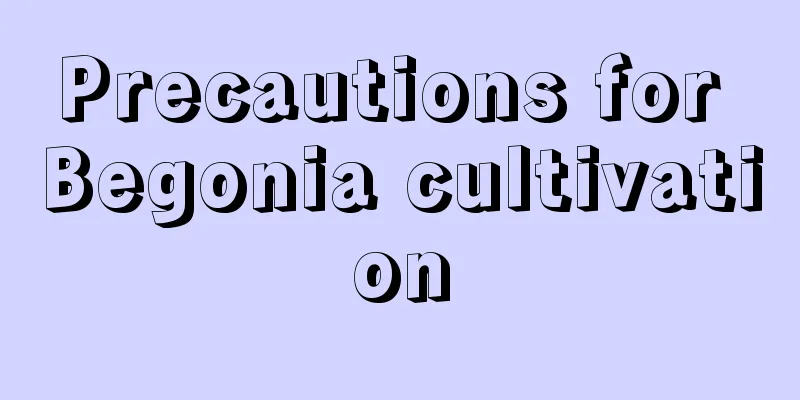Precautions for Begonia cultivation

When growing begonia, just pay attention to applying fertilizerDuring the growing period of Begonia, do not add fertilizer randomly. Reasonable fertilization should be carried out according to the color of the plant's leaves and the growth of the leaves. Do not use too much fertilizer, otherwise the leaves will grow too long, resulting in excessive density, affecting flowering, and will also lead to poor growth, affect light, and cause yellowing of leaves. Before the begonia blooms, it is necessary to apply an appropriate amount of phosphorus-potassium compound fertilizer, which can help improve the quality of its flowering. The key points of breeding BegoniaThe seeds for begonia potted plants should be planted in spring in April or May, or in autumn. The seeds should be evenly scattered in the soil in the pot and there is no need to cover them with soil. Use the water absorption method to absorb enough water from the basin where the seeds are planted, then cover it with a piece of glass or put on a plastic film, and place it in a semi-shaded environment. It will take about 10 days for it to take root and sprout. Plant seeds in spring and they will bloom in autumn. How to prune BegoniaAnother thing to note when caring for Begonia is pinching. After the flowers have faded, the dead flowers and diseased leaves should be pinched in time to allow it to branch more and bloom more. If you ignore this important pruning step, the plant will easily grow thin and tall, with an ugly shape, affecting its appearance, and the number of flowers will also decrease. Watering tips for BegoniaBegonias need to be watered in the morning and evening in summer. In winter, the best time to water them is at noon when the light is strongest. Because there is less sunlight in winter, watering at a moderately warm temperature can prevent the begonias from freezing. When watering, do not water too much, and remember not to allow water to accumulate in the soil, otherwise the soil in the pot will accumulate, causing the roots to rot and the leaves to turn yellow and wither. Disease and Pest Control of BegoniaBegonia is very susceptible to root rot and stem rot during the hot and dry summer period. In the early stage of the disease, the amount of watering should be controlled and carbendazim should be sprayed for prevention and control. Spray 3-5 times continuously to see results. |
<<: Common Poinsettia Varieties
Recommend
Where is the best place to plant willow trees? Where is the best location to plant them in the house?
Willow planting area Willow is a very common tree...
The growth environment and local conditions of Poria cocos
Poria cocos growth environment and conditions Por...
What to do if Guanghan Palace grows too long? Causes and treatment methods of growth
What does Guanghan Palace look like? During the n...
What are the cultivation methods and precautions for gladiolus
Gladiolus cultivation method Gladiolus is a plant...
Ryegrass planting method
1. Site selection When planting ryegrass, choose ...
Green radish grows fastest in summer. If you grow it like this, it will grow to 1 meter in 20 days!
If you expose the green radish to more sunlight a...
Does catnip prefer shade or sun?
Does catnip prefer shade or sun? Catnip is relati...
Heartleaf vine cultivation method
1. Lighting Heart-leaf vine does not require a lo...
How to grow seal succulents, what to do if the leaves are wrinkled
1. How to raise 1. Adequate sunlight: Generally s...
Methods and precautions for hydroponic cultivation of Brazilian wood Methods for hydroponic cultivation of Brazilian wood
Brazilian wood, also known as Brazilian iron tree...
How many days does it take for beans to germinate? How to manage them after they have just emerged?
How long does it take for beans to germinate? It ...
What to do if the Chinese evergreen grows too tall
1. Change the maintenance environment If the Chin...
What is the best planting method and time for tulips?
Which month is suitable for planting tulips? If t...
Echeveria in the Flower of Life
The hot summer is the season when lotus flowers a...
How to grow Datura in autumn
1. Reduce watering Usually when the temperature i...









